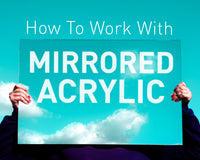Desktop 5V LED Lamp Design Aims:
- Simple & Clean design.
- Very easy 3D print.
- Easy assembly.
- Hides cables.
- Fits designated kit.
Quick Tip:
If you press 'S' on the keyboard, it brings up the search function, where you can type the first couple of letters of any feature and it will bring them up in a list you can select from. This saved me loads of time!Time to Print:
 Using Robox's open source software AutoMaker I set them off to print! One of the great things about Robox printers are that they use smart reels which tell the printer what material it is using, this means the printer automatically sets the head and bed temperature.
Using Robox's open source software AutoMaker I set them off to print! One of the great things about Robox printers are that they use smart reels which tell the printer what material it is using, this means the printer automatically sets the head and bed temperature.  For more advanced users you can adjust these to suit the print better, the settings I found best for this particular print were;
For more advanced users you can adjust these to suit the print better, the settings I found best for this particular print were;
Inner:
- Material - PLA
- Temperature - 195
- Flow - 100%
- Infill - 20-25%
Outer:
- Material - ColourFab XT
- Temperature - 235
- Flow - 100%
- Infill - 20-25%
Issues I Faced:
The product is printed in three components, the interior, exterior and the battery cover. The inside and outside components slide together to form the product, so when the first prototype came off the printers, there was no gap between them. Resulting in a very strong friction fit where even standing on the two pieces couldn't push them together, that's when we brought out the hammer! To resolve this issue the interior was made 0.35mm smaller, which allowed the product to be pressed together by hand. I used the ColourFab XT for the outer shell as it is very strong compared to both PLA and ABS, however any of the smart reel materials could be used.Assembly:
- Push together the interior and exterior components, these should slide inside one another without too much difficulty.
- For the rectangular desk-lamps, mount the switch through hole and use nuts provided to secure in position. The bulb design does not need this step as there isn't a switch, as can be seen in the above photograph.
- Insert the components into the designated slots, and feed excess wire into the battery slot.
- Place cover over the back of the electronics and screw into place using an M3 screw.
Download Our Design Files:
©Kitronik Ltd – You may print this page & link to it, but must not copy the page or part thereof without Kitronik's prior written consent.



















8 comments
Mark Donnison
Hi Mark, I've emailed you the Fusion 360 file. I hope this helps.
Mark Prowle
Hi, I have just ordered the above kit for my yr9 DT classic Australia , would it be possible to have the native fusion 360 files so that it would be possible to edit them. great project idea. thanks mark
Mark Donnison
We would love to, time permitting.
Daniel
Can you please make tutorial on how to do this on cad pls thks
Mr George Baker
Hey Mark, Thanks for the email! The .step files that you attached will do the job just fine. Thanks for doing that and i will add the LED light kit to my next Kitronik order. Received my latest order from you yesterday and everything was fine. Thanks again, George
Mark Donnison
Hi George, Sean is completing his final year at University but will be back with us after the summer. In the meantime, I will try to rustle them up for you.
Mr George Baker
Hey Sean, Congratulations on your achievements so far! This is a great project, but could you possibly post links to the native fusion 360 files so it would be possible to edit them. The reason being that I only have access to a 3d printer with a small print area, so I would need to split the components and create some sort of lap joint to join them securely. Thanks in advance, George
Mrs Sinclair
Dear Sean Thank you for sharing this, it looks a excellent project. I look forward to trying it. I hope all goes well in your final year Regards Julia